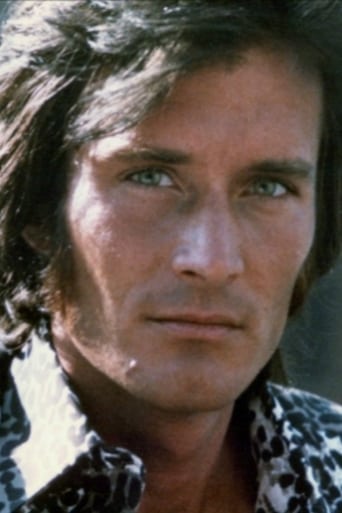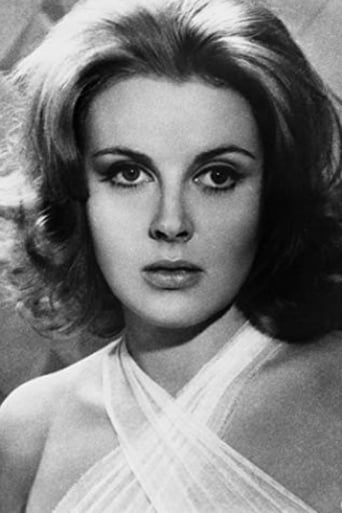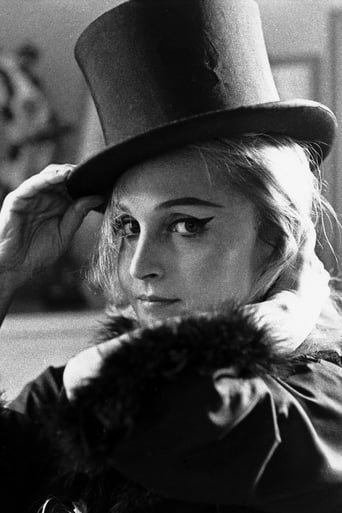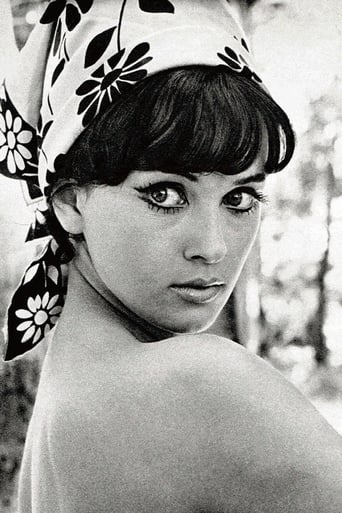accattone74
Bava is the personification of Italian Horror, and perhaps nowhere is the central axiom of this genre more apparent than in the highly personal Hatchet for the Honeymoon. A seemingly run-of-the-mill story involving one John Harrington (a wedding-dress only transvestite designer who murders his own luscious models), Hatchet for the Honeymoon is, on close inspection, both the thesis and antithesis of Italian Horror. Thesis, because the film is highly stylized and stays true to many genre tropes. But this film is often derided by Italian Horror fans for what on the surface seems to be a complete lack of originality – the banality of this particular plot seems like too much re-treading to most. The only diagetic mysteries in Hatchet for the Honeymoon are reasons and motivations. Identity and morality (two of the most common themes in the genre up until this film, if not the only themes) have no place here, hence antithesis.Not since Bava's The Girl Who Knew Too Much had an Italian Horror film focused so much on the psychology of just one character. John Harrington's psychology is in fact the main 'character' of the film. Each grisly murder unlocks a room in John's demented brain. Each room reveals a piece of his haunted past that might help him figure out why he kills, and always while wearing a wedding dress. His wife Mildred (played to the snarky hilt by Laura Betti, a legendary muse of Pier Paolo Pasolini) is a nagging, unsympathetic, infuriatingly fickle harpy, who we long for John to zero in on, but not before she gets out a few more fierce barbs. But contrary to the traditional fashions of Italian Horror, the murders are never really shown. Instead the viewer is lead to believe that each murder is a necessary, hallucinogenic, somatic, and almost innocent catharsis, simply leading John Harrington (and us) towards his cure, and towards the credits' final roll.In Blood & Black Lace, despite its intoxicating and never-seen-before palette of sanguine lushness, Bava was still quite reliant on script and plot to further his movies toward their inevitable conclusions. Suspense and the obligatory who-and-how-done-its were still vital to the resolution of the plots to Kill Baby, Kill and Bava's 1965 sci-fi touchstone Planet of the Vampires. Although each of those three films carefully nicked away at the singular stranglehold that 'dialogue and plot' had on the viewer's emotional involvement, a pure cinema of horror as yet eluded Maestro Bava. And by this notion of 'pure cinema', I'm referring to the aesthetics and visuals – the arguable responsibility of film to be more akin to photographic rather than theatrical devices. Whether or not Bava ever achieved a cinema of pure horror is something left to individual tastes, although I'd like to think that with Black Sunday he accomplished that goal right out of the gate.In Hatchet for the Honeymoon there's simply the subjective situation, needs and mystery of one man involved and at stake. There are no innocent villagers to save, no planet Earth to rescue from vampiric destruction, no revenge or morality play to push to its inevitable end. Just one ego. One psyche. One lens, if you will. In fact, is all of what we see on the screen even really happening to John Harrington in the world of the film itself? As Laura Betti has pointed out, having a script be nothing of importance to the filmmaker "is something that is not considered normal in America, yet I must tell you that all Italian directors do this. Even Fellini, Pasolini, and Bertolucci." In America it's an anomaly to have more than one screenwriter on a single film; in Italy almost the opposite is true. It's not unheard of for an entire production to have been shot from a few pages of notes, suggestions of dialogue if you will. Films via the set & camera, not via the page.I believe this is paramount in understanding Italian Horror and also perhaps why it is a genre often considered the 'gateway drug' between high-art film aficionados and lowbrow genre geeks. Art snobs appreciate the notion of visuals furthering a plot, the medium of film being self-reliant and self-referential, mood as the main, or rather most relevant, character, etc. And genre-philes often leap to "art films" after seeing Italian Horror, as they realize having to 'think' about movies isn't such a dumb/un-cool idea after all. Hatchet for the Honeymoon is Bava's tone poem – the film where he finally puts the script aside, consciously making the movie's atmosphere and theme the true main character. Incredibly enough, Bava also found the time to turn the giallo on its head in the process. In Hatchet, we know who the murderer is from the start of the picture. We know murders will have to continue. We can even securely guess the impetus for what John Harrington's doing; it's John himself who's having the hard time figuring it all out. Despite this being a film full of death, mayhem, insanity, psychoses, and perhaps even guilt, Bava had finally discovered a way to divorce sympathy and empathy from it all. Is this dehumanizing or even morally criminal? Most likely, yes. But is it fascinating, beautiful, striking, even downright funny? Without a doubt. Everything we've come to love about Bava up to this film is here, and in spades. With Bava trapped in an unhappy marriage himself, but being a good catholic never divorcing or even supposedly cheating on his wife, his passion towards Hatchet for the Honeymoon makes it among his most personal of works.
gavin6942
A bridal design shop owner (Stephen Forsyth) kills various young brides-to-be in an attempt to unlock a repressed childhood trauma that's causing him to commit murder.Bava expert Tim Lucas calls this "Mario Bava's most personal horror movie" and states "Time has shown the film, initially misunderstood and considered one of Bava's lesser works, to be startlingly prescient, pointing the way for Mary Harron's film of Bret Easton Ellis' American Psycho in particular." I can definitely see the "American Psycho" connection -- that was a good call.Up to 1970, had we seen this before? A psychotic killer who comes across as normal rather than a loony nut who has escaped an asylum? This is no slasher (in some ways it is a ghost story)... it is also not necessarily a serial killer film. But in its own way, it was Ted Bundy before there was a Ted Bundy.
bunion_bill
This was the worst thing I have seen in a very long time. Really a complete waste. It was not a horror movie, it was not a thriller, it was not gore - but it tried to be a little of everything, and it turned out it didn't succeed in any of those ambitions. The acting was poor to say the least, the sound was terrible, not to mention the non-existing lip sync. Already half way through the film you feel you've had enough of the close ups of Stephen Forsyth's face and eyes. It's not even thrilling, since you in the first five minutes get to know who the killer is. The only positive thing to say about this film is that it contained a few groovy outfits and sets but nothing worth to waste an hour and a half on!







